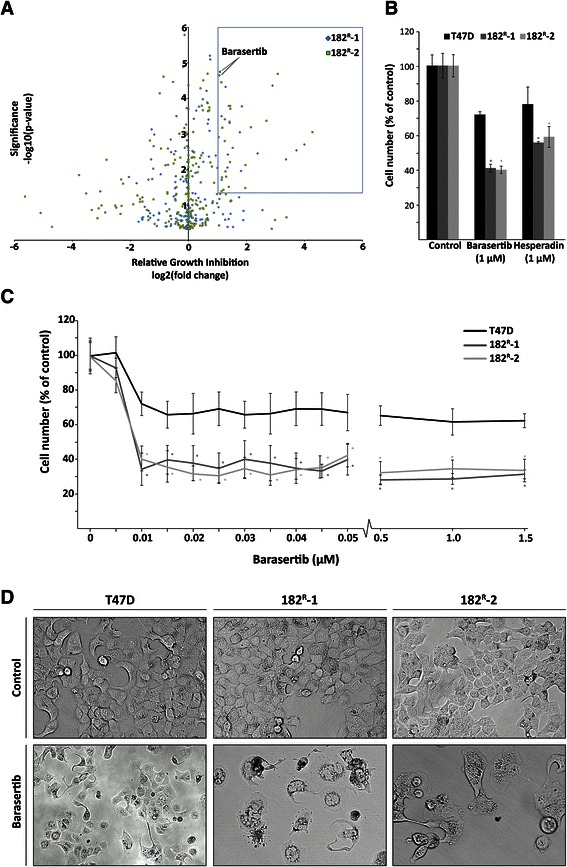Figure 1.

The kinase inhibitor barasertib induces preferential growth inhibition of fulvestrant resistant cell lines. A. Parental (T47D) and fulvestrant resistant (182R-1 and 182R-2) cell lines were treated for 5 days with a kinase inhibitor library containing 195 different kinase inhibitors (1 μM). Cell number was assessed by a CellTiter-Glo Luminescent Cell Viability Assay. In the generated volcano plot, the box indicates kinase inhibitors with more than two-fold greater growth inhibition of the fulvestrant resistant cells (182R-1 and 182R-2) compared to the parental T47D cells (P < 0.05). B. Mean cell numbers of parental and resistant cells treated with barasertib (1 μM) or Hesperadin (1 μM) shown as percent of untreated control. The results are from the kinase inhibitor screen. C. Parental and fulvestrant resistant cells treated for 5 days with the indicated concentrations of barasertib. Cell number was determined by a crystal violet colorimetric assay and expressed as percent of untreated control. The experiments were performed twice with six sample replicates. Representative experiments with mean ± SD are shown. D. Representative pictures of parental and resistant cells treated for 5 days with barasertib (50 nM μM) or DMSO (control). *P < 0.05 for barasertib treated samples vs. control.
